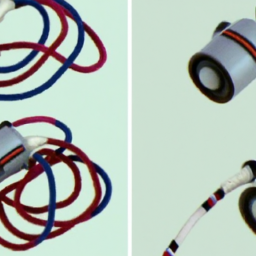
In this article, you will learn some useful tips on how to maintain a camper shell hoist to ensure safe operation. By following these steps, you can ensure that your hoist is in good working condition and avoid any accidents or mishaps.
Firstly, it is important to regularly inspect the hoist for any signs of wear and tear. Check the cables, pulleys, and other moving parts for any cracks, rust, or loose connections. Lubricate the hoist regularly to prevent any friction and ensure smooth operation. Secondly, make sure to clean the hoist after each use to remove any dirt or debris that could interfere with its operation. Lastly, always store your camper shell hoist in a dry and secure location when not in use to protect it from the elements and prevent any damage. By following these maintenance tips, you can ensure that your camper shell hoist remains safe and reliable for years to come. Maintaining a camper shell hoist is essential for ensuring safe and efficient operation. Regular inspections, cleaning, and lubrication will not only prolong the lifespan of the hoist but also minimize the risks of accidents or malfunctions. In this article, we will provide you with a comprehensive guide on how to maintain and care for your camper shell hoist properly.
Inspecting the Hoist
The first step in maintaining your camper shell hoist is to inspect it regularly for signs of wear and tear. This will help you identify any potential issues and address them before they escalate. Here are a few things to check during your inspection:
Checking for signs of wear and tear
Inspect the hoist for any visible signs of damage or wear, such as rust, cracks, or bent components. Pay attention to the frame, support beams, and any other areas that may be subject to stress or strain.
Examining the cables and pulleys
Inspect the cables and pulleys for any signs of fraying, kinking, or damage. Ensure that the cables are properly aligned and not rubbing against any sharp edges. Check for any loose or worn-out pulleys and replace them if necessary.
Ensuring all bolts and nuts are secure
Check all bolts and nuts to ensure they are securely fastened. Tighten any loose ones and replace any damaged or missing ones. Make sure that all connections and joints are firmly in place and show no signs of movement or instability.
Cleaning and Lubricating
Regular cleaning and lubrication are crucial for maintaining the smooth operation of your hoist. Dirt, debris, and lack of proper lubrication can cause the hoist to operate inefficiently and even lead to its premature failure. Here’s what you need to do:
Removing dirt and debris
Using a stiff brush or compressed air, clean off any dirt, dust, or debris that may have accumulated on the hoist. Pay particular attention to the moving parts, such as the cables, pulleys, and gears. Make sure to remove any obstructions that may hinder the hoist’s operation.
Applying lubricant to moving parts
After cleaning, apply a suitable lubricant to the moving parts of the hoist, such as the cables, pulleys, and gears. Use a lubricant specifically designed for hoist systems and follow the manufacturer’s recommendations regarding the type and amount of lubricant to be used.
Wiping down the hoist
Finally, wipe down the entire hoist with a clean, dry cloth to remove any excess lubricant or dirt. This will help prevent the buildup of grime and maintain the hoist’s overall appearance.
Testing the Hoist
Once you have inspected and cleaned the hoist, it is essential to test its operation to ensure its functionality and safety. Here’s what you should do:
Raising and lowering the camper shell
Raise and lower the camper shell several times using the hoist to test its operation. Pay attention to any unusual noises, vibrations, or jerky movements, as these may indicate underlying issues.
Checking for smooth operation
Observe the hoist’s movement as you raise and lower the camper shell. It should move smoothly and without any hitching or sticking. If you notice any irregularities, investigate further to determine the cause and address it accordingly.
Verifying weight capacity
Check the hoist’s weight capacity to ensure that it is suitable for your camper shell’s weight. Exceeding the weight limit can put undue stress on the hoist and compromise its safety. If necessary, consider upgrading to a higher capacity hoist to accommodate your needs.
Addressing Any Issues
In the course of inspecting and testing your hoist, you may come across any issues that need to be addressed promptly. Here are a few common problems and how to fix them:
Repairing damaged cables or pulleys
If you find any frayed or damaged cables, they should be immediately replaced to prevent accidents. Similarly, worn-out or damaged pulleys should be replaced to ensure smooth operation.
Replacing worn-out parts
Over time, certain components of the hoist may wear out and require replacement. This may include bolts, nuts, gears, or other moving parts. Replace any worn-out parts as soon as possible to prevent further damage or mishaps.
Adjusting tension on cables
If you notice that the hoist is not lifting or lowering the camper shell evenly, it may be due to uneven cable tension. Adjust the tension on the cables by tightening or loosening them as necessary. Seek professional assistance if you are unsure how to do this properly.
Storing the Hoist Properly
When not in use, it is important to store the hoist properly to protect it from the elements and prolong its lifespan. Here are a few guidelines for storing your hoist:
Finding a suitable storage area
Choose a dry and well-ventilated area to store your hoist. Avoid exposing it to extreme temperature variations, direct sunlight, or excessive humidity, as these can cause damage or corrosion.
Covering the hoist to protect from elements
Use a suitable cover to protect the hoist from dust, dirt, and moisture. Ensure that the cover is secure and does not allow any water to accumulate on the hoist.
Securing any loose components
Before storing the hoist, make sure to secure any loose components, such as cables or pulleys, to prevent them from getting damaged or causing injury.
Regular Maintenance Schedule
To ensure the long-term performance and safety of your hoist, it is essential to establish a regular maintenance schedule. Here are a few guidelines for setting up a maintenance routine:
Setting a routine for inspections and cleaning
Schedule regular inspections and cleaning sessions for your hoist to keep it in optimal condition. Depending on the frequency of use, this could range from monthly to quarterly inspections and cleanings.
Creating a schedule for lubrication
Determine how often your hoist requires lubrication and create a schedule for applying lubricant. This will vary depending on the manufacturer’s recommendations and the hoist’s usage.
Noting any repairs or replacements needed
Keep a record of any repairs, replacements, or adjustments done on the hoist. This will help you track the hoist’s maintenance history and identify any recurring issues.
Seeking Professional Assistance
While regular maintenance can be done by most hoist owners, there may be complex issues that require professional expertise. Here’s when you should seek professional assistance:
Contacting a hoist specialist for complex issues
If you encounter any issues with your hoist that you are unable to resolve on your own, contact a hoist specialist for assistance. They have the necessary knowledge and experience to diagnose and fix complex problems.
Getting expert advice on maintenance
Reach out to a hoist specialist for guidance on maintaining your specific hoist model. They can provide you with valuable insights and recommendations on the best practices for caring for your hoist.
Obtaining professional installation if necessary
If you are installing a new hoist or replacing an old one, it is advisable to seek professional installation. This will ensure that the hoist is properly installed and set up for safe and efficient operation.
Educating Yourself on Safety
To operate your hoist safely, it is crucial to educate yourself on its proper usage and safety guidelines. Here’s how you can do this:
Reading the hoist’s manual
Read the hoist’s manual thoroughly and familiarize yourself with its specific operating instructions, safety precautions, and recommended maintenance procedures. This will help you understand the hoist’s capabilities, limitations, and ensure safe operation.
Understanding weight limits and specifications
Be aware of the hoist’s weight capacity and adhere to it strictly. Overloading the hoist can lead to accidents and damage to the hoist or the camper shell.
Following safety guidelines
Always follow the manufacturer’s safety guidelines when operating the hoist. This includes using safety harnesses, positioning the hoist on level ground, and keeping a safe distance from the hoist during operation.
Training and Supervision
If multiple people will be using the hoist, it is important to provide proper training and supervision to ensure everyone understands and follows proper procedures. Here are a few guidelines for training and supervision:
Teaching others to operate the hoist safely
Provide thorough training to anyone who will be operating the hoist. Cover all safety aspects, proper usage, and maintenance procedures. Emphasize the importance of adhering to weight limits and safety guidelines.
Supervising the use of the hoist
Regularly supervise the use of the hoist to ensure that all safety protocols are being followed. This will help identify any potential issues or unsafe practices and address them promptly.
Ensuring everyone understands proper procedures
Regularly communicate and reinforce proper procedures with everyone who uses or comes into contact with the hoist. This will help create a culture of safety and ensure that everyone understands their responsibilities.
Conclusion
Maintaining a camper shell hoist is essential for safe operation and to prolong its lifespan. Regular inspections, cleaning, and lubrication will help identify and address any issues before they escalate. Addressing any issues promptly and seeking professional help when needed will ensure optimal performance. By educating yourself on safety guidelines, training others, and providing proper supervision, you can ensure the safe operation of the hoist. Remember, following proper maintenance procedures and safety guidelines will guarantee the longevity and reliable function of your hoist for years to come.









